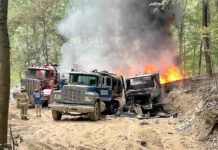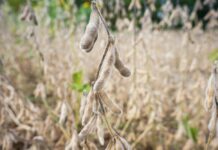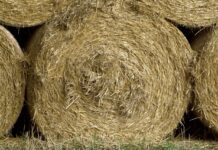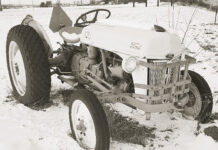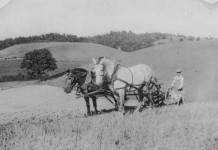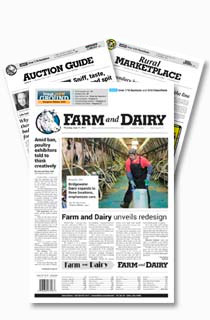
I wish I had a dollar for every meeting I’ve attended when somebody would spout something about seeing the “big picture” and staying “focused.” I get it – at least I eventually got it – but sometimes that concentrated attention carries the cost of missing smaller yet incredibly important issues and opportunities.
Managing wildlife habitat carries these similarities. When state and federal agencies develop management plans, they tend to be broad-based with decades-long goals. Implementation can take years, and most of the impacted habitat manipulation is restricted to state-governed property.
When considering that the Ohio Department of Natural Resources owns roughly 618,000 acres and manages another 201,000 acres scattered over 88 counties, the job becomes daunting.
Now consider that Ohio contains just shy of 28.7 million acres, meaning that ODNR’s property comprises a paltry 3-5%.
Toss in managing wildlife populations across the entire state, and we begin to realize how the 95% of Ohio’s privately owned property has the potential to impact habitat and wildlife restoration — as well as carrying some inherent difficulties.
While we’re looking at the numbers, we need to toss in the 13.9 million agricultural acres in the state — where much of Ohio’s wildlife finds shelter. Many of these landowners willingly participate in federally funded conservation programs through the soil and water conservation districts and the Farm Service Agency; these programs offer long-term wildlife habitat, wind and flood erosion and important soil and water benefits. This requires some of that “big picture” planning and is the reason the Division of Wildlife funds the Private Lands Biologists positions and why organizations such as Pheasants Forever and Ducks Unlimited offer their own technical and financial help.
It’s really up to you and me to place more emphasis on the “little picture” plans. I define this as the impact that an individual can have upon our wildlife resources on a smaller scale.
“Habitat for wildlife is continually shrinking — I can at least provide a way station,” explains Peter Coyote, actor and narrator of Ken Burns’ “The National Parks” documentary.
Backyard wildlife and odd-area wildlife management can be done by any homeowner and can offer that “way station” for a variety of local and migrating birds, butterflies and other small, yet valuable, wildlife species. You’ll be rewarded with your own oasis for wildlife and birdwatching while blending the work with existing landscaping.
First steps
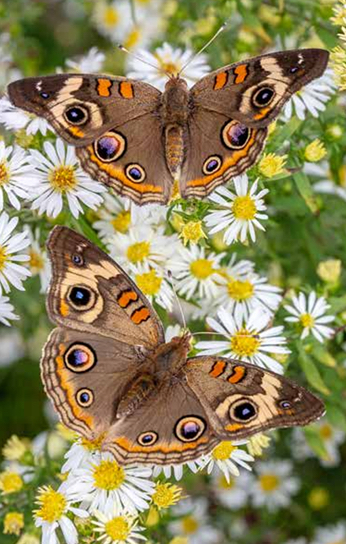
The most important thing is to take that first step and evaluate the area around your home. Make a sketch of your yard and include existing trees, plantings and special areas where you’re considering making the changes. Measurements can help and creating extra copies will allow for multiple ideas and changes.
So where do you start? First, keep the work realistic. You can find books online, in the library and by researching the Division of Wildlife’s website, wildohio.gov.
Begin by making a list of what you want to accomplish and choose three or four projects to get started — it’s supposed to be fun, so don’t get too ambitious in the beginning. You can also enlist some help for the project. Many like to set an area aside to allow children to add their own creativity.
A great first effort would be a hummingbird and butterfly garden. There are plenty of resources available to help you plan the plantings. Just remember to choose plants that are appropriate for Ohio’s climate.
Here a few garden recommendations that the Division of Wildlife offers in the invaluable “Backyard for Butterflies,” publication 5089. Also check out publication 37, “Attracting Birds in Ohio.” Both are part of the free field guides and backyard wildlife series offered by the division. They can be viewed and downloaded online at wildohio.gov or call 1-800-WILDLIFE for copies.
To get started, plan your garden so you have flowering plants from early spring to late fall. Consider what butterflies need to complete their entire life cycle: nectar plants, host plants and areas for overwintering. Introduce native plants whenever possible; they provide butterflies and their caterpillars the resources they need, and your wildlife visitors are most accustomed to these generationally available plant species. Perennial plants often won’t bloom the first year so have patience.
Pesticides, herbicides and fungicides can be in your seeds, plants or soil that you purchase. Even products labeled organic can be toxic to butterflies. Ask before you buy. Leaving the leaves on the ground and dead stems through the winter is important. Caterpillars and butterflies use these for shelter to survive the freezing temperatures.
Try to use native plants in the garden. Some that will serve you well include Canada anemone, golden Alexander, wild columbine, bee balm, dense blazing star, common milkweed, purple coneflower, white wood aster, blue vervain, native asters and don’t forget little bluestem for a tall grass planting. Beneficial hardwoods include common witch-hazel, common ninebark, shagbark hickory and common winterberry.
Maybe you’re scratching your head and thinking that you don’t have the space for a full-blown garden. Fortunately, there’s still a solution. Small spaces can benefit by using containers and hanging baskets, and these can also be used to enhance your garden. There are many new containers on the market, even self-watering ones. Visit local suppliers for some options.
Don’t be afraid to lose a little yard, either. Grass has very little wildlife value — just don’t get too aggressive too early. Add a native flower bed or two, and you might be surprised at the changes it makes. Your own success may encourage you to make future additions. Your mower will thank you.
Don’t forget bird feeders, water, birdhouses and butterfly boxes. I even have a friend who maintains a pair of beehives in his urban yard, and the honey he extracts adds a healthy treat to the kitchen table.
Ultimately, your backyard is an artist’s canvas, ready for you to create the habitat that can benefit some of our most fragile resources. You can add color, gain knowledge and enjoy the fact that you’ve made your world a little more beautiful while adding a way station for Ohio’s most delicate wildlife.
“The garden suggests there might be a place where we can meet nature halfway.”
— Michael Pollan


